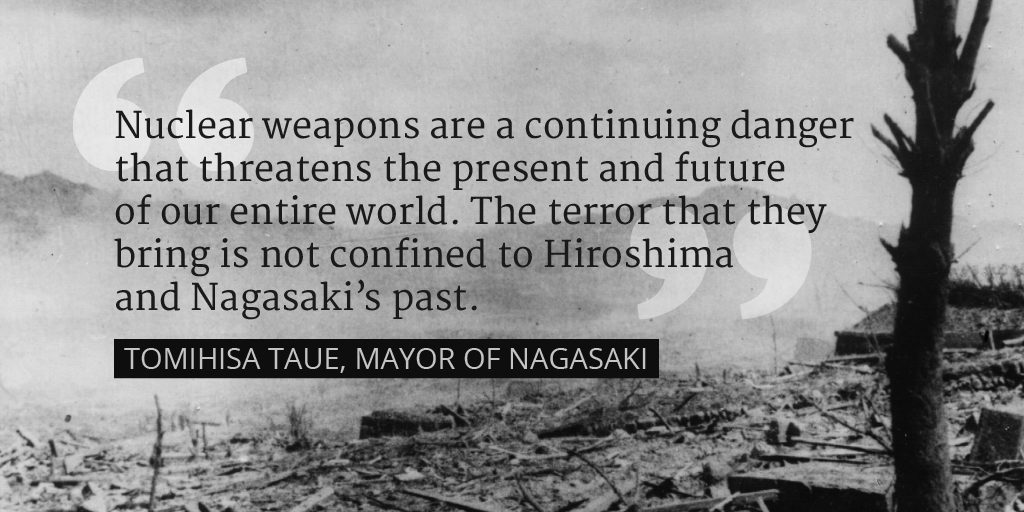
US Approves Funds to Develop INF-banned Missiles before Treaty Withdrawal
(August 19, 2019) — The United States had approved funds to develop medium- and shorter-range missiles even before it decided to withdraw from the Intermediate-Range Nuclear Forces (INF) Treaty, Russian Defense Minister Sergei Shoigu said Sunday.
Eight months before the US decision to withdraw from the deal, budgetary funds had been allocated for the development of missiles banned by the INF Treaty, Sputnik news agency quoted Shoigu as saying.
Moscow remains open to dialogue on this issue with Washington and will not reciprocate in kind until the United States deploys INF-banned missiles in Europe and Asia, Shoigu said.
Russian President Vladimir Putin said in a statement earlier this month that Russia’s existing missiles are already able to deal with the threats to its national security originating from the termination of the INF Treaty.
US Secretary of State Mike Pompeo said on Feb. 1 that the United States would suspend compliance with the landmark bilateral nuclear arms control pact with Russia and formally withdraw in six months if Moscow does not end its alleged violation of the pact.
The United States has formally withdrawn from the INF treaty with Russia, Pompeo said on Aug. 2 in a statement.
On the same day, US Secretary of Defense Mark Esper said that the United States will fully develop ground-launched conventional missiles after withdrawing from the treaty.
The United States had already begun research and development activities for the ground-launched missiles in 2017, Esper said in a statement.

The US Is Set to Start Building Once-banned Cruise Missiles for the First Time Since the Cold War
Ryan Pickrell / Business Insider
(March 11, 2019) — The Department of Defense plans to begin fabricating components for ground-launched cruise missile systems, Pentagon officials have confirmed.
These systems were banned under the now-suspended 1987 Intermediate-Range Nuclear Forces Treaty, a Cold War-era arms pact between the US and Russia.
Research and development began in 2017, but the US exercised restraint, refusing to take things a step farther to avoid treaty violations. The Pentagon reportedly plans to restart the manufacturing process for once-banned ground-launched cruise missiles as a Cold War-era arms agreement with Russia crumbles, Aviation Week reported.
The Trump administration announced US withdrawal from the 1987 Intermediate-Range Nuclear Forces (INF) Treaty in early February, citing Russian violations of the bilateral arms control agreement. The pact is expected to expire in August.
President Donald Trump stated last month that the US will “move forward with developing our own military response” to alleged Russian treaty violations. Russia has said it will do the same, although there is evidence it had already done so.
In the late 1970s, the Soviets deployed the RSD-10 Pioneer intermediate-range ballistic missile system in Eastern Europe, and the US responded by deploying mid-range Pershing II missiles and intermediate-range ground-launched cruise missiles in Western Europe.
The deployment of the BGM-109G ground-launched cruise missile (GLCM), a variation of the Navy’s Tomahawk cruise missile, helped bring the Soviets to the negotiating table, Breaking Defense reported last October, noting that reviving this system would be relatively easy.
The INF Treaty helped defuse tensions by prohibiting both sides from developing and fielding these types of weapons, but with the treaty on its deathbed, the Department of Defense has decided to begin fabricating components for GLCM systems, Pentagon officials told Aviation Week.
The Pentagon confirmed the plan to Reuters as well.
In late 2017, research and development began on non-nuclear GLCM concepts, but it never moved beyond that, as any additional steps would have been “inconsistent” with the requirements of the INF Treaty.
Even as the Department of Defense steps up R&D activities since the suspension of the treaty, it remains open to canceling the programs and returning to negotiations with Russia.
“This research and development is designed to be reversible, should Russia return to full and verifiable compliance before we withdraw from the Treaty in August 2019,” a Pentagon spokesperson explained to Aviation Week, adding that “because the United States has scrupulously complied with its obligations with the INF Treaty, these programs are in the early stages.”
The suspension of the INF Treaty has stoked fears about an escalated arms race between the US and Russia. Russian President Vladimir Putin has already threatened the US should Washington opt to place missiles in Europe, something it presently has no intention of doing.
If Washington takes that step, Moscow “will be forced, and I want to underline this, forced to take both reciprocal and asymmetrical measures,” Putin said. “We know how to do this and we will implement these plans immediately, as soon as the corresponding threats to us become a reality.”
“It’s their right to think how they want. But can they count? I expect they can. So let them count the range and speed of our weapons,” he added.
As for the revival of the GLCM program, the US reportedly has a number of different options.
It could, according to experts, convert existing air- and sea-launched cruise missiles, like the Raytheon AGM-160 Miniature Air-Launched Decoy, Raytheon AGM-109 Tomahawk and Lockheed Martin AGM-158 Joint Air-to-Surface-Standoff Missile, to a GLCM role while adapting existing rocket artillery launchers for this purpose.
Or, it could build something completely new.
Read More:
• Trump is ripping up the INF Treaty, ending a key Cold War nuclear arms pact with Russia• In threatening state of the nation address, Putin threatens to target the US with new weapons if it puts missiles in Europe